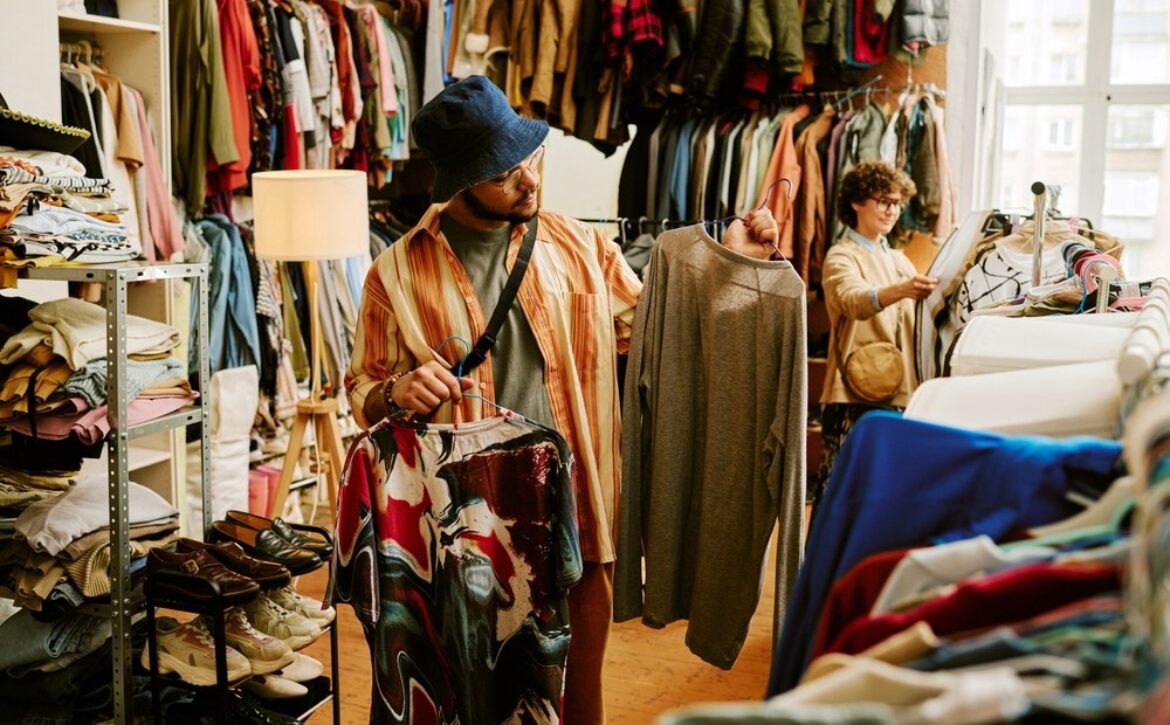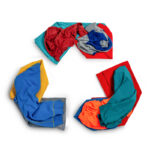What is Thrifting?

Thrifting is one of those things that means different things to different people. For some, it’s about saving money. For others, it’s the thrill of hunting down a vintage gem. And for more and more people, it’s become part of a sustainable lifestyle that pushes back against fast fashion and overconsumption.
But if you’re wondering what thrifting actually is, how it works, and how it’s different from just buying used clothes online, this post will break it all down.
Thrifting means shopping secondhand
At its core, thrifting is shopping for secondhand goods, usually at physical stores that collect donations from the public. Most people associate it with clothes, but thrift shops also carry home décor, furniture, kitchenware, books, and a lot more depending on the shop.
What makes thrifting unique is the setting. You’re not browsing a curated showroom or online shop. You’re walking into a store where everything was pre-owned, dropped off by someone else, and resold at a low price. It’s about finding value in what already exists.
How thrift stores work
Thrift stores usually get their inventory from donations. People clean out their closets, drop off items they no longer use, and the store sorts through it all. Some items go on shelves right away. Others might be cleaned or repaired first. A few things may be recycled or rejected if they’re damaged beyond use.
Prices tend to be low because the items are secondhand and often sold as-is. What the store earns often goes toward running costs or local community programs. Some thrift stores are tied to charities. Others are small businesses or community-run spaces.
Either way, the goal is the same. Take something someone no longer wants and get it into the hands of someone who can use it again.
Is thrifting the same as buying used?
It depends who you ask, but the short answer is this – All thrifting is secondhand shopping, but not all secondhand shopping is thrifting.
Buying secondhand includes thrifting, but also covers things like online resale apps, vintage boutiques, and consignment shops. These options might be more expensive or more curated. Some are focused on trends, designer labels, or high-quality used goods.
So while the items might all be pre-owned, the experience can feel very different.
Why people thrift
There’s no single reason why someone chooses to thrift. Some are drawn to the lower prices. Others want to support local shops. Many enjoy the hunt — you never know what you’re going to find, and that makes it exciting.
More recently, thrifting has become popular among people who want to cut back on waste. With fast fashion flooding the market and landfills overflowing, secondhand shopping gives clothes a longer life. It’s a way to shop without contributing to overproduction.
It also opens the door to more personal style. Thrift stores offer items from every era, trend, and brand. You can mix and match, experiment, and build a wardrobe that’s truly yours.
What you can find while thrifting
Every thrift store is different, but here’s what you can usually expect:
- Clothing for all ages and sizes
- Shoes, boots, and accessories
- Bags, hats, scarves, and belts
- Home goods like dishes, mugs, cookware, and small appliances
- Books, puzzles, games, and sometimes vinyl records or DVDs
- Furniture, depending on the size of the shop
- Décor like lamps, mirrors, vases, or holiday items
Some stores specialize more than others. A smaller shop might focus only on clothes. A bigger location might feel like a mini department store. The fun is in the variety.
Tips for your first trip
If you’ve never thrifted before, here are a few things to keep in mind.
- Go with an open mind. Thrifting isn’t like regular shopping. You probably won’t find exactly what you want right away, but you might stumble on something even better.
- Take your time. There’s usually a lot to sort through, and it isn’t always organised like a big chain store.
- Check the condition. Look for stains, rips, missing buttons, or broken zippers. A small flaw isn’t a dealbreaker if you’re handy, but it’s good to know what you’re getting.
- Try things on if you can. Sizes vary a lot between brands and decades. A size medium from the 90s won’t fit the same way as a modern one.
- Visit often. New items come in all the time, so if you don’t find anything today, try again next week.
- Bring your own bag. Many thrift stores skip plastic bags to stay eco-friendly.
Why thrifting matters
Thrifting is more than just shopping on a budget. It’s a way to reduce waste, lower your carbon footprint, and push back against disposable culture. Every item you buy secondhand is one less item being made new. That saves water, energy, and raw materials. It also keeps clothes out of the landfill and extends their lifespan.
On top of that, thrifting supports small businesses and community efforts. Many stores use their profits to fund food banks, shelters, job training programs, and more. So your purchase often helps more than just the planet — it helps people too.
And let’s not forget about creativity. Thrifting gives you the freedom to try styles that aren’t in stores anymore. You can upcycle, customize, and experiment without spending a fortune.
Thrifting means buying pre-owned goods, usually at a local shop that relies on donations. It’s affordable, eco-friendly, and endlessly full of surprises. Whether you’re looking to save money, reduce waste, or just find something unique, thrifting makes it possible.
It’s different from typical secondhand shopping in that it’s local, donation-based, and often more casual. There’s no pressure to follow trends. No need to spend a lot. And no downside to giving things a second life.
So if you’ve never given it a go, start now. Head to your nearest thrift store and see what you can find. And when you’re ready to let go of things you no longer use, drop them off and keep the cycle going.
For more info, visit thrifttownstores.com to find your local store, check donation guidelines, and see how thrifting fits into a more sustainable future. It’s simple, it works, and it’s for everyone.









